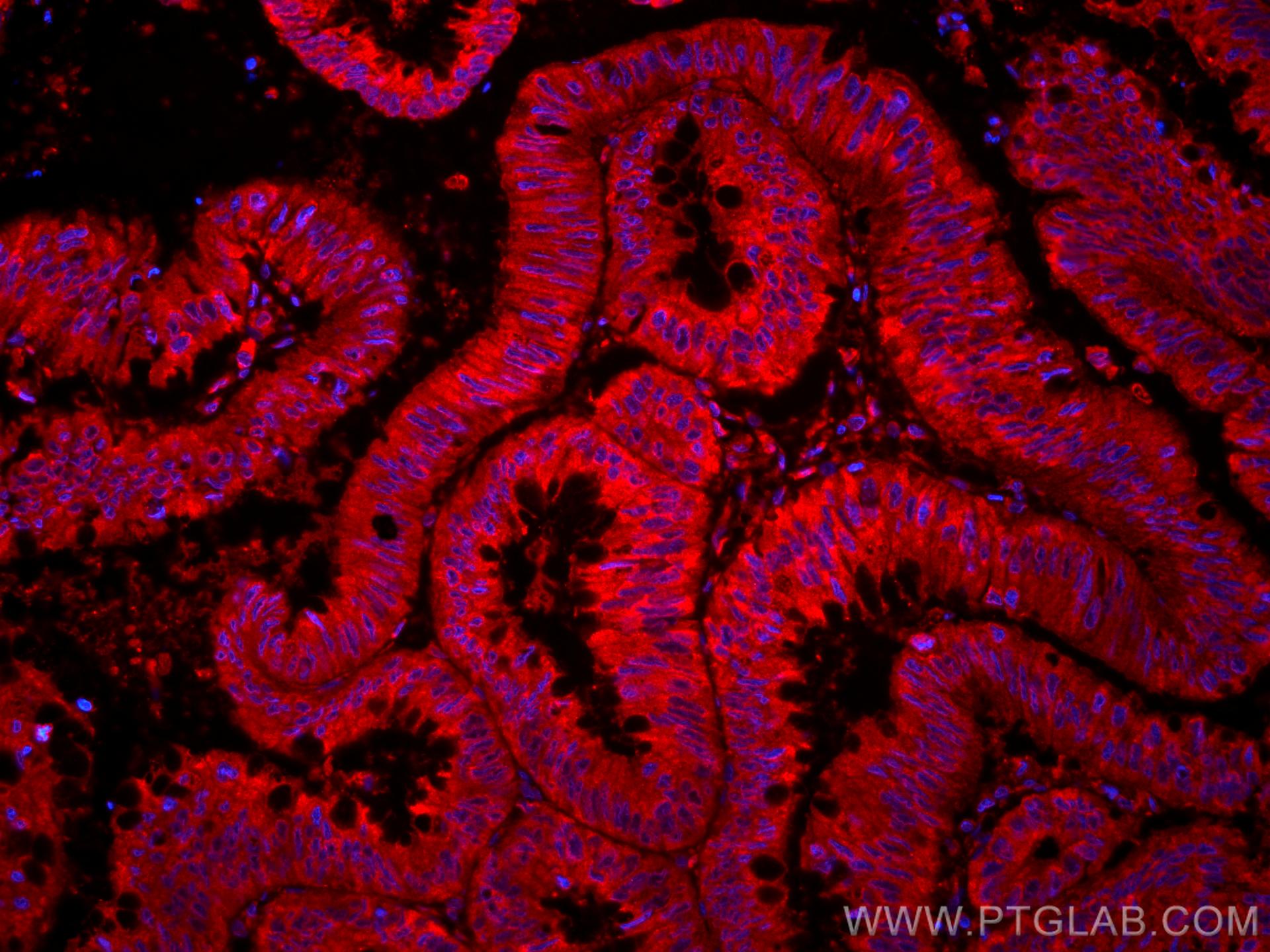验证数据展示
经过测试的应用
| Positive IF-P detected in | human colon cancer tissue |
推荐稀释比
| 应用 | 推荐稀释比 |
|---|---|
| Immunofluorescence (IF)-P | IF-P : 1:50-1:500 |
| It is recommended that this reagent should be titrated in each testing system to obtain optimal results. | |
| Sample-dependent, Check data in validation data gallery. | |
产品信息
CL594-66209 targets ST6GALNAC6 in IF-P applications and shows reactivity with human, mouse samples.
| 经测试应用 | IF-P Application Description |
| 经测试反应性 | human, mouse |
| 免疫原 |
CatNo: Ag8358 Product name: Recombinant human ST6GALNAC6 protein Source: e coli.-derived, PET28a Tag: 6*His Domain: 67-333 aa of BC007802 Sequence: VFHYGSLRGRSRRPVNLKKWSITDGYVPILGNKTLPSRCHQCVIVSSSSHLLGTKLGPEIERAECTIRMNDAPTTGYSADVGNKTTYRVVAHSSVFRVLRRPQEFVNRTPETVFIFWGPPSKMQKPQGSLVRVIQRAGLVFPNMEAYAVSPGRMRQFDDLFRGETGKDREKSHSWLSTGWFTMVIAVELCDHVHVYGMVPPNYCSQRPRLQRMPYHYYEPKGPDECVTYIQNEHSRKGNHHRFITEKRVFSSWAQLYGITFSHPSWT 种属同源性预测 |
| 宿主/亚型 | Mouse / IgG1 |
| 抗体类别 | Monoclonal |
| 产品类型 | Antibody |
| 全称 | ST6 (alpha-N-acetyl-neuraminyl-2,3-beta-galactosyl-1,3)-N-acetylgalactosaminide alpha-2,6-sialyltransferase 6 |
| 别名 | hST6GalNAc VI, RP11 203J24.3, Sialyltransferase 7F, SIAT7 F, SIAT7F, ST6GalNAc VI, ST6GALNAC6, ST6GALNACVI |
| 计算分子量 | 333aa,38 kDa; 374aa,41 kDa |
| 观测分子量 | 38-42 kDa |
| GenBank蛋白编号 | BC007802 |
| 基因名称 | ST6GALNAC6 |
| Gene ID (NCBI) | 30815 |
| RRID | AB_2919965 |
| 偶联类型 | CoraLite®594 Fluorescent Dye |
| 最大激发/发射波长 | 588 nm / 604 nm |
| 形式 | Liquid |
| 纯化方式 | Protein G purification |
| UNIPROT ID | Q969X2 |
| 储存缓冲液 | PBS with 50% glycerol, 0.05% Proclin300, 0.5% BSA, pH 7.3. |
| 储存条件 | Store at -20°C. Avoid exposure to light. Stable for one year after shipment. Aliquoting is unnecessary for -20oC storage. |
背景介绍
ST6GALNAC6 is a sialyltransferase which is responsible for the synthesis of all a-series gangliosides. It has a broad expression pattern. ST6GALNAC6 was reported to be a key enzyme in the synthesis of disialyl monosialyl Lewis (Lea), a representative tumor-associated antigen in cancers of the pancreas and colon.
实验方案
| Product Specific Protocols | |
|---|---|
| IF protocol for CL594 ST6GALNAC6 antibody CL594-66209 | Download protocol |
| Standard Protocols | |
|---|---|
| Click here to view our Standard Protocols |


